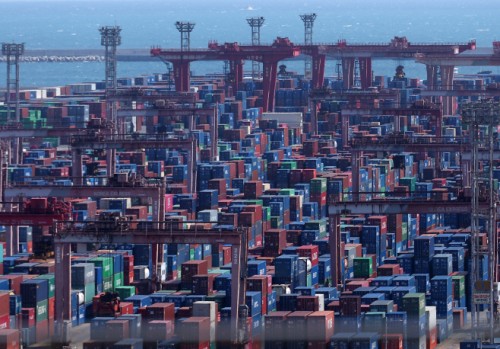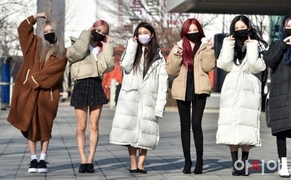 |
| Containers are stacked at a terminal in Busan Port. / Source: Yonhap News |
The Organisation for Economic Co-operation and Development (OECD) has sharply downgraded its forecast for South Korea’s economic growth this year to 1.0%, just three months after its previous projection. The revision comes as tariffs imposed by the administration of U.S. President Donald Trump are weighing heavily on the Korean economy.
With the OECD now signaling prolonged low growth, concerns are mounting that the country may be entering a full-fledged recession. Calls are growing for the new government to swiftly present measures to stimulate the economy.
On June 3 (local time), the OECD released its latest outlook, cutting South Korea’s growth forecast by 0.5 percentage points from its March projection of 1.5%. Among major economies, Korea saw the steepest downgrade apart from the U.S.
The 1.0% forecast is now in line with the International Monetary Fund’s (IMF) April projection. It remains slightly above estimates from the Bank of Korea (0.8%) and the Korea Development Institute (0.8%). The OECD had initially forecast 2.1% growth in December but lowered it to 1.5% in March, factoring in the impact of last December’s emergency martial law declaration.
The downgrade reflects growing uncertainty and constraints on exports and investment due to Trump’s tariffs.
Major domestic and international institutions have steadily revised down their growth outlooks this year. In April, the IMF cut its forecast from 2.0% to 1.0%, and the Bank of Korea recently slashed its projection from 1.6% to 0.8%.
As of May 30, a Bloomberg survey of 41 institutions showed growth forecasts for Korea ranging from 0.3% to 2.2%. Notably, 21 institutions—including Bank of America Merrill Lynch (0.8%), Capital Economics (0.5%), Citigroup (0.6%), and HSBC (0.7%)—projected sub-1% growth, while nine others, including Barclays, Fitch, and Nomura Securities, forecast 1.0%. In total, 30 institutions are now predicting growth of 1% or less, effectively confirming market expectations of near-zero growth.
A growing concern is the prospect of stagflation—persistently sluggish domestic demand coupled with high inflation. In April, South Korea’s consumer price index rose to 116.38 (2020=100), up 2.1% year-on-year. Dining out costs jumped 3.2%, marking the sharpest rise since March 2023 (3.4%). Statistics Korea is set to release May’s consumer price data on June 4.
Experts advise that instead of relying on short-term fiscal stimulus, the new government should swiftly craft structural economic policies tailored to South Korea’s demographic trends and fiscal health.
An economist, speaking on condition of anonymity, said, “To revive the economy, it is essential to consider population dynamics and fiscal soundness rather than pursuing short-term fiscal injections. Economic policy must be restructured with a long-term perspective.”
Most Read
-
1
-
2
-
3
-
4
-
5
-
6
-
7





















